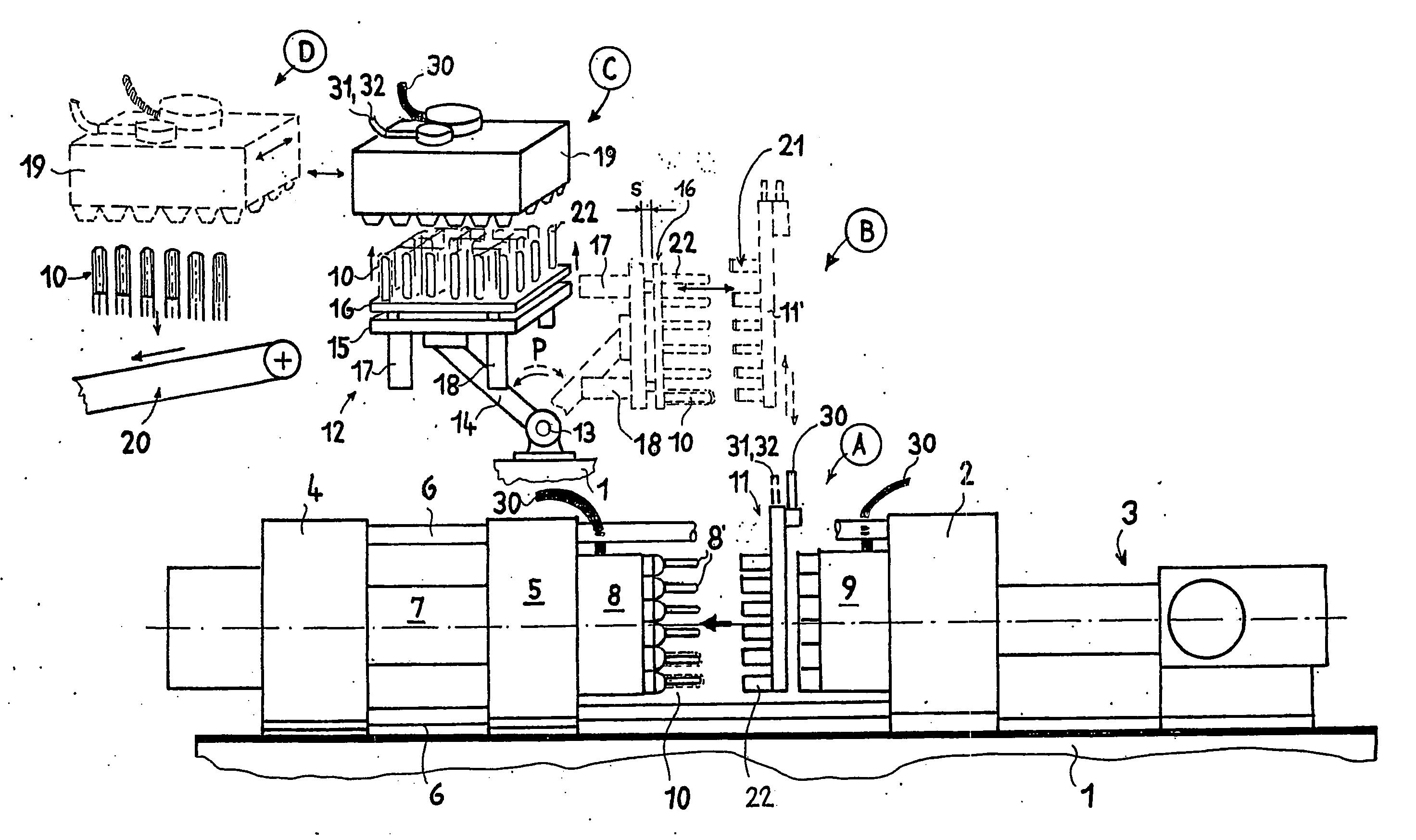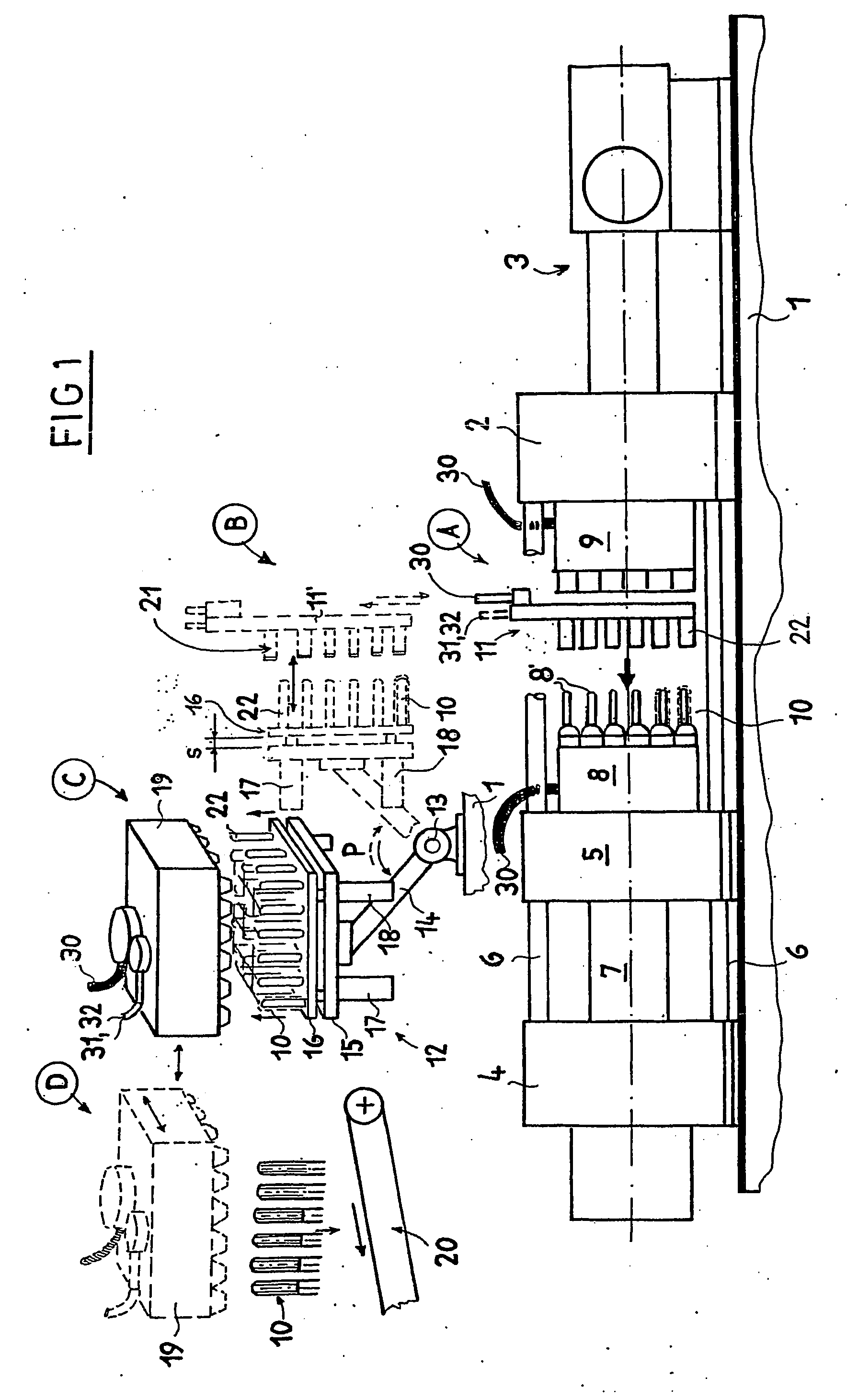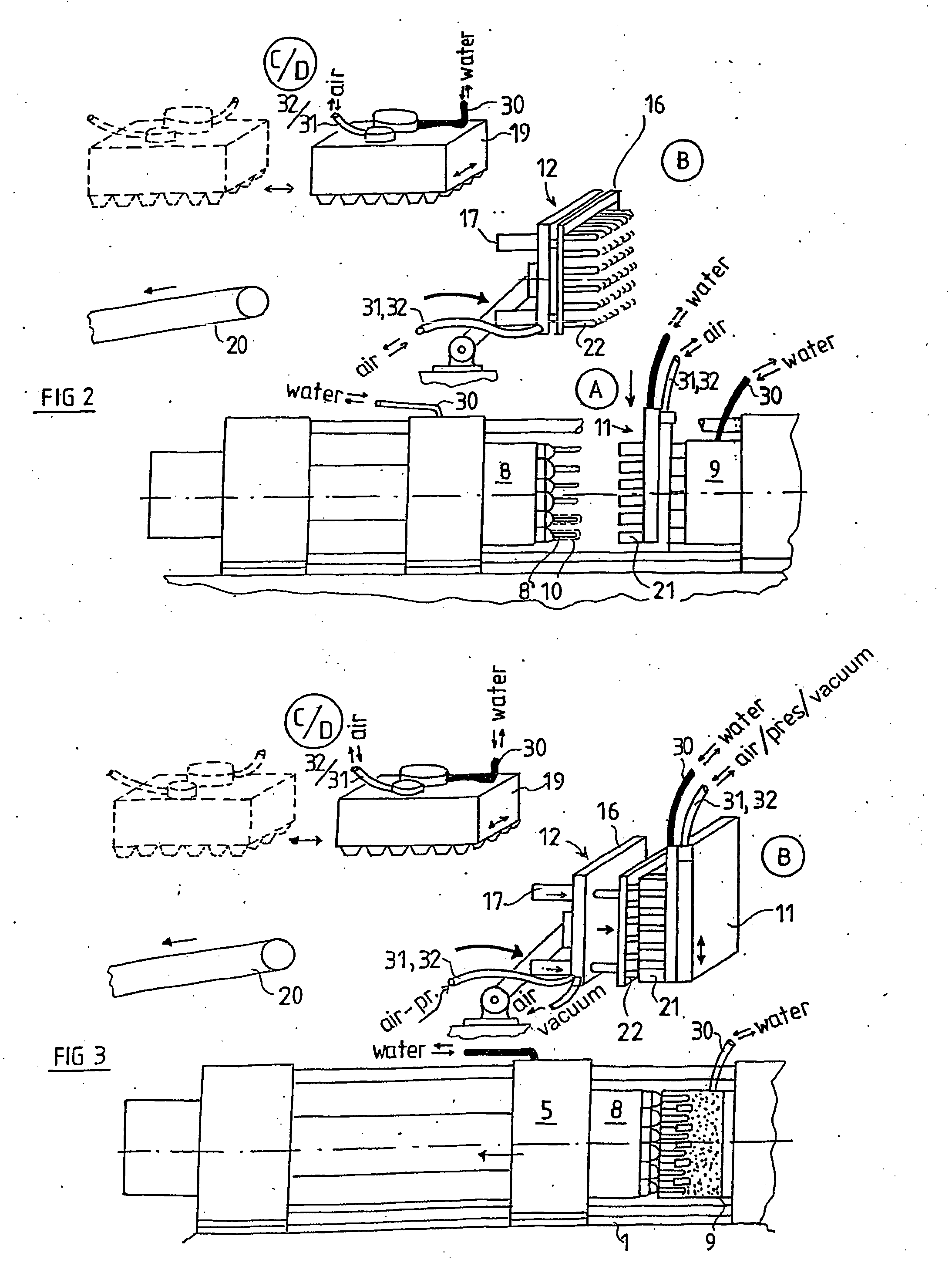Method and device for the secondary treatment and the cooling of preforms
a technology for secondary treatment and preforms, applied in the field of secondary treatment and preform cooling, can solve the problems of reducing the productivity of the entire system, requiring precision, and requiring extensive water cooling
- Summary
- Abstract
- Description
- Claims
- Application Information
AI Technical Summary
Benefits of technology
Problems solved by technology
Method used
Image
Examples
first embodiment
[0018] An especially advantageous first embodiment is characterized in that a slight swelling pressure is generated through the cooling pins. In view of the best possible thermal transition between the preforms and the inner wall area of the cooling sleeves, the objective is to introduce the preforms into the cooling sleeves without play, if possible. A solution in the state of the art is to develop the preforms conically on the outside, with the preforms being only introduced partially initially, pulled in gradually with appropriate negative pressure at the opposite side, and good wall contact with the cooling sleeve is maintained over the entire duration of the secondary cooling time. The big disadvantage is that the bottom parts of the preforms are cooled only very poorly from the outside. With the new solution, the complete introduction is performed dynamically with no time delay, if possible, i.e. essentially within seconds. The wall contact can be maintained during the remaind...
second embodiment
[0020] the inner cooling is performed by means of suction air through cooling pins arranged on a transfer gripper, which are introduced synchronously into the interior of the preforms after the removal device is moved out completely, with suction air remaining active after the intensive cooling during the transfer of the preforms from the removal device to a separate secondary cooling station until the preforms are transferred to the secondary cooler. During the intensive cooling, each cooling pin remains connected to a vacuum pump that actively suctions off warmed cooling air through the cooling pin. The intensive inner cooling is maintained for at least 2 to 7 seconds of cooling time and / or approximately 3% to 10% of the secondary cooling period until sufficient firmness of the outer skin of the preform. The intensive cooling is only a fraction of the entire secondary cooling. During the intensive cooling, the temperature is lowered on the average by 20 to 40° C. A severe prolong...
third embodiment
[0023] A third embodiment is characterized in that the device for an interior cooling has cooling pins of a controlled, displaceable supporting plate which can be introduced into the preforms, with the individual cooling pins being developed to yield into the direction of the introduction movement with respect to the preforms so that each cooling pin can be introduced with controlled force until it establishes contact with the inner mandrel part of the preforms. The cooling pins can be developed as blow mandrels and have a movably arranged contact head and a continuous air boring to the contact head, which runs into a blast air chamber between the blow mandrel and the contact head and is variable in size. Advantageously, each cooling pin has a compression spring to generate a controlled pressing power. The cooling pins are developed with a contact cooling head for the mechanical contacting and contact cooling of the corresponding interior mandrel part of the respective preform, with...
PUM
| Property | Measurement | Unit |
|---|---|---|
| glass temperature | aaaaa | aaaaa |
| temperature | aaaaa | aaaaa |
| surface temperature | aaaaa | aaaaa |
Abstract
Description
Claims
Application Information
 Login to View More
Login to View More - R&D
- Intellectual Property
- Life Sciences
- Materials
- Tech Scout
- Unparalleled Data Quality
- Higher Quality Content
- 60% Fewer Hallucinations
Browse by: Latest US Patents, China's latest patents, Technical Efficacy Thesaurus, Application Domain, Technology Topic, Popular Technical Reports.
© 2025 PatSnap. All rights reserved.Legal|Privacy policy|Modern Slavery Act Transparency Statement|Sitemap|About US| Contact US: help@patsnap.com



